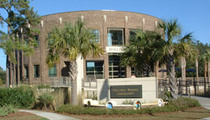OHHI Centers of Excellence
Three OHHI Centers of Excellence were competitively awarded in 2004. They have strong multi-institutional partnerships with academia, other federal and state agencies, and the private sector; foster robust linkages across marine and biomedical sciences and management communities; and strengthen NOAA's core capabilities to conduct leading-edge research in OHH areas particularly related to NOAA's mission.

The OHH Center at HML is developing new methods and approaches to identify and characterize chemical and microbial threats to marine ecosystems and human health and to evaluate the health responses of marine organisms to stress. The core research areas for this center include: (1) source tracking of marine pathogens; (2) emerging chemical contaminants; (3) applied marine genomics; and (4) monitoring, assessment, and prediction.

The WCCOHH at the NWFSC conducts its research through four core programs: (1) pathogens, viruses, and bacteria; (2) chemical contaminants and biotoxins; (3) marine mammals and fish as sentinel organisms; and (4) climate impacts. Key priorities for the Center include sharing data and research results with other institutions and the public, fostering the exchange of information among diverse communities, including other OHH programs, and providing educational opportunities.

The CEGLHH at GLERL focuses on understanding the inter-relationships among the Great Lakes ecosystem, water quality, and human health. Main research foci include: (1) bacterial and microbial pollutant sources and loadings; (2) pathogen/virus transport; (3) microbial research; (4) nearshore transport; and (5) Harmful Algal Blooms (HABs). The research includes laboratory work, field experimentation, and computer modeling.
Other National OHH Centers
NSF-NIEHS Center for OHH at the University of Washington
(Pacific Northwest Center for Human Health and Ocean Studies, PNW H2O)
NSF-NIEHS Woods Hole Center for Oceans and Human Health (WHCOHH)
NSF-NIEHS Center for OHH at the University of Hawaii
(Pacific Research Center for Marine Biomedicine, PRCMB)
NSF-NIEHS Center for Oceans and Human Health at the University of Miami
(Center for Subtropical and Tropical Oceans and Human Health Research in the Marine Sciences [UMCOHH])

